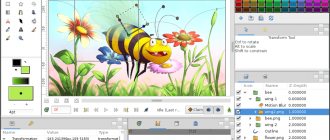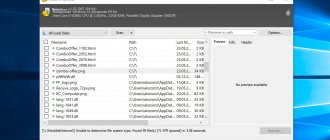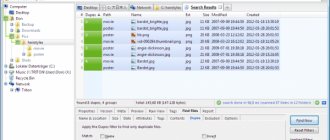The Unarchiver: Unzip RAR
In modern realities with large-capacity storage devices, clouds and wireless data transfer, many have abandoned the use of archives.
However, you often have to download something from the Internet, receive compressed data by mail, or even download applications from the developer’s website in the archive.
Just install The Unarchiver and unpacking will no longer be a problem. The application is not the most sophisticated in its niche, but the basic capabilities are enough for everyone, and the program is absolutely free.
What you need for installation
First you need a computer with a compatible processor. Without this nothing will work. Currently, processors from Intel Core and Atom families are supported. The processor must support Ivy Bridge and the SSE instruction set. If you do not have such a processor, then it is better to immediately abandon this idea. Now about the owners of AMD processors. Theoretically, you can get a Mac to work on these processors, but stability is not guaranteed. Moreover, the probability of frequent crashes and reboots is very high, because AMD is in no way designed for the Mac.
If your laptop has a suitable configuration, then you can begin preparing a USB drive for installing the operating system. It is recommended to have a flash drive with a capacity of 16 gigabytes or more (in most cases, an image of the installed system will be deployed to the flash drive, and it “weighs” about 10 gigabytes). And the last thing you need to stock up on is free time and patience: installing Mac OS on a laptop from a flash drive (if you are doing this for the first time) will take 4-6 hours and will waste your nerves. The installation itself will go quickly, but not everything works out the first time. And setting up the system takes a lot of time. So, let's go.
VLC or IINA media player: watch any video
The second common problem that every Mac user faces is watching videos . Standard QuickTime does not support all formats and has virtually no settings.
To forget once and for all about codecs, video formats, support for audio tracks and subtitles, just install one universal player.
A couple of years ago, the leader in this segment was the VLC , but now this player has a worthy alternative - IINA .
The VLC application has long been familiar to users, is developed for all modern platforms, and the creators of the program have vast accumulated experience.
In turn, IINA is created exclusively for macOS, written in the progressive Swift language, has a lighter design and is not inferior in the number of settings.
AirDrop
AirDrop for iOS and Mac is now universal. That is, you can transfer files from a mobile device to a computer and vice versa.
The function works great, although not without problems. Sometimes the connection disappears and appears again after a while. I have not been able to figure out what this is connected with.
But overall, AirDrop is good; files are transferred almost instantly and in a couple of clicks.
DaisyDisk: Keep track of space on Mac
The Mac storage space analyzer will always tell you how to quickly and efficiently clean up your computer.
There are no cleaning algorithms, improvers or optimizers here. Just a visual pie chart.
Instead of deleting tens of megabytes, you can immediately find unnecessary data that takes up the lion's share of space. Thoughtful manual cleaning every six months will free up much more space than any automatic cleaning.
What are the risks when installing on a PC?
There are a lot of risks, because this operating system is not intended for our wooden computers.
- First, some “vital” PC components may not be working. Whether they will be able to launch or not is unknown.
- Secondly, installing Mac OS on a PC or laptop is accompanied by an increased consumption of nerve cells, which can lead to equipment failure (you won’t install anything the first time).
- Third, installing a Mac on a computer other than the original Mac is a punishable crime. But if this doesn’t scare you, then go ahead.
And installing Mac OS on a laptop is always fraught with risks - laptops for the most part are problematic devices for Macs. While on a PC you can somehow change the configuration to a compatible one, this trick won’t work with laptops. A full-fledged launch of a Mac on laptops is only possible with the help of numerous “crutches”. And the more “crutches” there are, the more unstable the system will behave. So, do you still want to try installing Mac on your laptop or PC? Then let's continue.
TripMode: spend less traffic from your iPhone
A real must-have for Mac owners who move a lot with their computer, work in a cafe, park, plane or train.
The program will come in handy when traveling abroad or when using your iPhone as a modem for your Mac.
The utility helps you quickly deny network access to any application. An icon in the menu bar allows you to manage settings with just a click.
This way you can easily save traffic, increase speed on a slow connection, or save battery power when necessary.
Handoff and Continuity
The era of Continuity will begin very soon as third-party developers implement this feature in their applications. Many did this immediately after the release of Yosemite, others will do it over time.
Continuity lets you experience apps on your iPhone, iPad, and Mac as if you were on the same device. The most common example is to start reading an article in Pocket on an iPhone and continue from the same place on a Mac.
The same applies to working with files, mail and many, many others. Continuity's capabilities will be limited only by the imagination of the developers.
Handoff is a feature very similar to Continuity that allows you to make and receive cellular calls on your Mac or iPad. And it's every bit as cool as it sounds. When working on a computer, you don't have to run to your phone to answer the call. And while watching movies on your iPad in bed, you can stop and call anyone directly from the tablet.
Tuxera or Paragon NTFS: make friends with flash drives for Windows
No matter how much you surround yourself with Apple technology, you will still have to work with NTFS. The Apple operating system perfectly reads data from another file system, but cannot write it without additional software.
To avoid rushing around looking for the best utility for working with NTFS, select the appropriate option in advance.
Recognized leaders in this niche are Tuxera and Paragon NTFS . Each application has its own army of fans, who extol the advantages of the program and do not notice its shortcomings.
In most cases, the utilities do the same job and are not very different from each other.
Installing and Running OS X Yosemite
So, our system boots.
1. Select the Russian language and move on to the next step - setting up the hard drive for the operating system. Since it is created initially on the NTFS file system (which does not work with OS X), we will have to play around a little.
2. In the top panel, go to “Utilities->Disk Utility”. In the left edge of the screen, select our newly made hard drive on which the installation will be performed, then in the right part of the window, open the “Erase” tab and erase the disk. After this, a clean partition for the OS will be created in it.
3. In the upper “toolbar” we go back to the installer (click on “Disk Utility” and select “OS X Installer”), indicate the “hard” we have just formatted for our needs, click “Continue” and wait for the installation to complete.
4. And now, the moment of truth - OS X Yosemite is ready to go! We skip the authorization step via iCloud, set a login/password for the user and, perhaps, that’s all.
That's all! Welcome to the brave new world of OS X. Share your experience with Apple's OS in the comments 
( 6 votes, overall rating: 4.17 out of 5)











